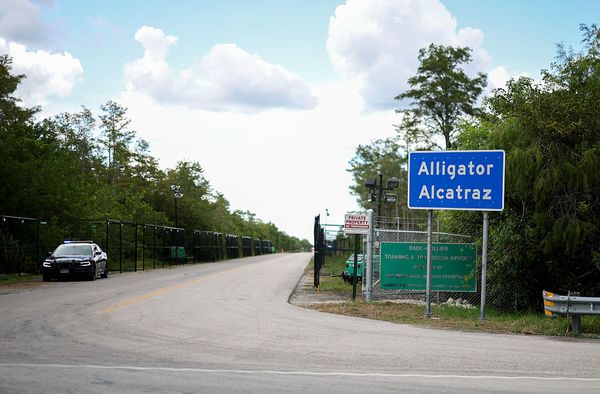
You don’t have to go far to be transported to a different world; England is bursting with incredible, whacky, haunting and majestic sights that have made history, inspired legends and spurred stories for thousands of years. What’s more, English Heritage has made this history accessible for everyone, with interactive exhibitions, informative tours, children’s activities and period performances. Here are seven of the best if you want your summer to be an epic one.
Stonehenge
While there are numerous debates about what this iconic circle of giant stones means (is it a 4,000-year-old burial site, religious monument, astronomical tool or a combination of all three?), what everyone agrees upon is that standing in its presence is an awe-inspiring, spine-tingling experience – not to mention a great photo opportunity. Located high up on Salisbury Plain, in Wiltshire, this Unesco world heritage site is a feat of engineering, and the nearby exhibition sets you the impossible task of moving a mighty sarsen stone yourself or, the slightly more doable one of stepping into a Neolithic village and experiencing what life was like then.
Tintagel Castle
A visit to Tintagel Castle is not for the faint-hearted; the fortress straddles a precipitous headland (known as the Island) and the north Cornwall mainland, and is connected via a footbridge that takes you above the craggy outcrops and crashing waves below. Of course, Tintagel is all about bravery, having been – according to the 12th-century historian Geoffrey of Monmouth anyway – the place where King Arthur was conceived. When the tide is out, you can follow in the footsteps of the young king and explore the mystical Merlin’s Cave or head on to the peninsula and pay homage to his legend at the stunning bronze sculpture of Gallos.
Dover Castle
Built by King Henry II to defend the short stretch of sea between England and France, Dover Castle, or “England’s mightiest castle”, has seen pomp, pageantry and its fair share of plotting over the years. But its role in recent history is probably its most impactful; it was beneath the 12th-century castle, in a series of gloomy tunnels and communications rooms, that Operation Dynamo, AKA the Dunkirk evacuation, was masterminded in 1940. Today, visitors can tour these secret wartime tunnels, before stepping back into the light – and medieval times – to watch a nail-biting joust, take part in an adventure quest or enjoy the castle-themed play area.
Osborne
It’s not often that you get to go “behind the scenes” when it comes to the British monarchy, but Osborne offers a unique glimpse into what Queen Victoria and her family got up to when they weren’t running an empire. Children and adults alike will be enamoured by the Swiss Cottage, an Alpine-style chalet where the nine royal children created their own private world, trying their hand at everything from growing vegetables to making bread, in interiors built at three-quarter scale to suit their size. Elsewhere, visitors can take a look at a bathroom (and bathtub) fit for a queen in Victoria’s personal dressing room and see the bedroom where she died, aged 81, in January 1901.
Hadrian’s Wall
Despite its name, Hadrian’s Wall is so much more than a 73-mile stone structure built by the Romans to mark the northern frontier at that point. See what all the fuss is about at Housesteads Roman fort in Hexham, Northumberland. Here, kids can find out what the Romans did for us by dressing up in traditional garb, handling replicas of Roman objects and exploring the interactive exhibition. Meanwhile, in the Corbridge Roman town, you’ll discover they weren’t so different to us as you walk along a real second-century high street, where they shopped for everything from bread to weaponry. OK, perhaps there were a few differences.
Whitby Abbey
Whitby Abbey will send a chill down your spine – and it’s not just because the 13th-century ruins are perched up high on the windy East Cliff. It was here in the seaside North Yorkshire town, in the summer of 1890, while on a week-long holiday, that Bram Stoker conceived Dracula. Nowadays, a trip here is like stepping into his gothic horror story. Like Dracula (who was in the guise of a large dog), you can plod up the infamous 199 steps or search for his victims among the abbey’s graves. There are also plenty of seasonal activities to sink your teeth into, including the ever-popular interactive summer performances – if you’re daring enough.
St Mawes Castle
In between marrying, divorcing and beheading wives, Henry VIII built St Mawes Castle, in Cornwall, a 16th-century fortress, to protect Falmouth from invasion. To really appreciate its majesty and clover-leaf shape, the castle is best approached by sea from Falmouth – and visitors can take their pick, arriving via the foot ferry or car ferry. Those of a gory persuasion will not be disappointed – there are murder holes under the arch as soon as you enter the guardhouse and a deep hole, or “oubliette” where prisoners and unruly soldiers were kept. For cannons as impressive as the views, head to the landscaped gardens where a saluting battery of guns points out to sea, warning uninvited guests to stay away.
Lindisfarne Priory
Approached by a causeway, the tidal island of Lindisfarne in Northumberland is heavily connected to Christianity in Britain. Irish monks settled here in AD 635, but it was the arrival of Cuthbert in the 670s who really put it on the map – a monk-bishop who went on to become the most important saint in northern England in the middle ages. He died in 687 and when his tomb at the priory was opened 11 years later, his remains hadn’t decayed. Thus began the cult of Cuthbert. Yet it could do little to stop a major Viking raid in 793, an attack on this sacred heart of Christianity that destroyed his church, with plunder and slaughter. The ninth-century Doomesday stone, uncovered here, features a carving of seven warriors brandishing battle axes and swords on one side, and proves that Christianity survived the Viking onslaught. You’ll be able to see the stone if you visit the ruins of the 12th-century priory church, as well as St Cuthbert’s Isle, used by Cuthbert as a retreat, and accessible at low tide.
English Heritage is for everyone and has something for everybody – so find your special place today







